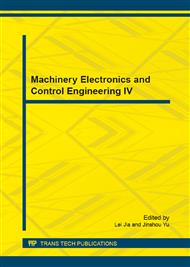p.51
p.56
p.60
p.64
p.71
p.79
p.83
p.87
p.92
Design of a Novice Hydraulic Buoyant Force Engine
Abstract:
In connection with the consumptive depletion of the earth and the destructive effect of emissions of combustion products on the environment, now all of humanity is in search for alternative energy sources. The proposed technology intends to produce electricity directly at the consumer location or in close vicinity to it by utilizing the concept of vertical buoyancy power generation in a still water reservoir and thus able to lower the cost of electricity and save the fossil fuels. The newly invented machine is able to converts the buoyance force energy into mechanical energy of shaft rotation, and thus into the electricity via rotary generator. The hydraulic buoyant force engine system includes two cylindrical pulleys with belt transmission mounted on the stationary frame that is submerged into the water. The belt carries the chain of elastic plastic airbags to generate the buoyance force. The empty and weightless airbags are driven first by the belt and pulleys system to the bottom of a water reservoir where they are filled with the air delivered by the compressor and then the bulged bags and thus connected belt are driven up by the buoyant force. As a result the belt and shaft of the connected to the upper pulley generator will be constantly driven by the buoyant force. The paper describes the details of the engine construction, the amount of power generated by the engine as a function of the reservoir depth and the power of an air compressor as well as advantages of such engine installations and their impact on the society.
Info:
Periodical:
Pages:
71-78
Citation:
Online since:
December 2014
Authors:
Price:
Сopyright:
© 2015 Trans Tech Publications Ltd. All Rights Reserved
Share:
Citation:


